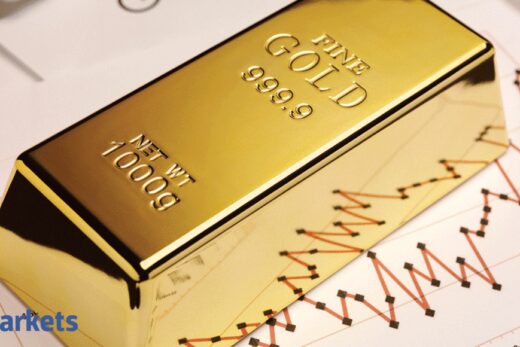LAUNCESTON: Gold suffered something akin to a flash crash in early Asian trade on Monday, and while the volatility was largely a result of thin, holiday-affected trade, the slump underscores the challenges facing the precious metal.
Spot gold dropped as much as 4.4% in a short period when Asian trade started on Monday, falling from its close of $1,762.69 an ounce on Aug. 6 to as low as $1,684.37.
The sharp sell-off was exacerbated by low liquidity, given holidays in Japan and Singapore, two of the main trading centres in the region. It’s also likely that algorithmic trading triggered selling as pre-determined price levels were breached.
Gold did recover somewhat throughout the day, closing at $1,729.46 an ounce on Monday, a drop of 1.9% from the previous close.
However, the precious metal came close to matching its low so far for 2021 during Monday’s trade, and is now down almost 17% from the record high of $2,072.50 an ounce reached in August last year, at a time when the global economy was in recession and battling to contain the coronavirus pandemic.
In addition to low liquidity and algorithms, there is a fundamental reason gold is losing ground, and that is increasing market expectations of monetary tightening in the United States.
Higher interest rates and the stronger US dollar that accompanies them usually creates a headwind for gold, given its status as a non-interest bearing investment.
One of the ways to gauge investor interest in gold is to look at the holdings of the biggest gold exchange-traded fund, the SPDR Gold Trust.
These have dropped to 32.64 million ounces on Aug. 6, from the 2020 high of 45.12 million, reached on Sept. 9, about six weeks after the spot price hit its record high.
With investor appetite for gold waning, the yellow metal needs its other drivers to fire to provide some price support.
PHYSICAL DEMAND TO SWOON?
These drivers include physical demand, especially from top consumers China and India, as well as central bank buying.
On this front the news is somewhat mixed, with a solid recovery in recent months in China’s demand being the highlight.
China’s gold jewellery demand jumped 62% to 146.9 tonnes in the second quarter compared to the same period in 2020, according to data from the World Gold Council.
The huge leap reflects the weakness in the second quarter last year caused by the pandemic and its associated lockdowns, but compared to the second quarter of 2019, China’s jewellery demand was 8% stronger.
Nonetheless, a cautionary note on China’s demand, as the second quarter figure was actually down 23% from the 191.1 tonnes recorded in the first quarter of 2021, suggesting jewellery demand is still somewhat fragile in the world’s biggest gold consumer.
India’s demand has also been affected by the coronavirus, and while the second quarter’s jewellery demand was up 25% from the same period a year earlier, at just 55.1 tonnes it was weak by historical standards.
India jewellery demand for the first half of 2021 was 157.6 tonnes, 39% below the first half average from 2015 to 2019, according to council data.
The renewed outbreaks of coronavirus in both China and India are also likely to weigh on demand in the current quarter, meaning the spot price may find little support from the two major physical buyers.
Central bank purchases are a bright spot, rising to 199.9 tonnes in the second quarter, which was the highest since the second quarter of 2019, with Thailand, Hungary and Brazil the biggest buyers.
While this is positive for gold demand, by itself central bank purchases won’t provide enough support in the absence of investor and consumer appetite.
For now gold appears to be facing the twin storm clouds of the possibility of higher US interest rates and threats to physical demand from the ongoing coronavirus pandemic across Asia.



